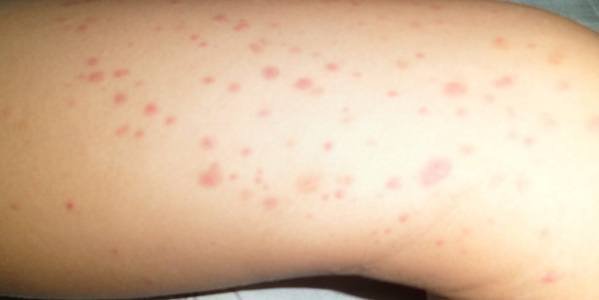Schoenlein Henoch disease

Schonlein Henoch disease is a disease that causes inflammation and bleeding in the small blood vessels in the skin, joints, intestines and kidneys.
The most noticeable feature of the disease is a purple rash, usually on the lower legs and buttock area.
It is also possible to cause abdominal pain and joint pain. In rare cases, it can progress to serious kidney damage.
Although the disease can affect anyone, it most often develops in children between the ages of 2 and 6 and usually resolves on its own during this period.
Medical attention is needed if the kidneys are affected.
What are the symptoms?
There are 4 main characteristics of the disease, although not all of those affected show them together.
They are:
• Rash /purpura/ – the most distinctive and universal sign of the clinical condition is the appearance of red-purple spots on the skin that look like bruises.
The rash mainly forms on the legs and feet, but can also appear on the hands, face and body and may be more pronounced in areas where there is more external pressure such as the waist and the sock area.
• Swelling and pain in the joints /arthritis/ – knees and ankles are most affected. Joint pain sometimes precedes the classic rash by 1 or 2 days. These symptoms disappear with the self-limitation of the disease and do not cause lasting health problems.
• Gastrointestinal symptoms – in many of the sick children, symptoms such as abdominal pain, nausea, vomiting or bloody stools are described and usually occur before the rash appears.
• Kidney involvement – in most cases it is described as the appearance of proteins or blood in the urine, which cannot be detected by the patient without a urinalysis.
Usually, the urine content normalizes after Schoenlein-Henoch Purpura is cured, but in some cases kidney disease develops, which may become chronic.
What are the causes?
In the disease, some of the small blood vessels become inflamed and as a result its characteristic symptoms appear, but what causes this is not clear.
p>
Although there are suggestions that a possible reason for this is an overactive immune system that overreacts to certain antigens that do not require such increased activity to destroy.
Treatment of Schonlein Henoch disease
The disease is considered to be self-limiting and usually subsides after a period of about a month, without lasting consequences for the health of the sufferer.
Doctors recommend rest, and it is preferable for the patient to spend most of his time in bed, completely refraining from physical exertion, for pain relief analgesics are usually administered.
The use of strong corticosteroids to prevent and treat the complications caused by the disease such as prednisone is controversial.
However, they are most often used to relieve gastrointestinal symptoms.
But since from the use of these drugs, you can develop serious and significant side effects, and as a result, you will receive only a bare promise of achieving a beneficial effect on the disease, it is best make a detailed assessment in advance, weighing the risks and benefits of taking a steroid course.
If the disease is the cause of intestinal obstruction or rupture, operative treatment is prescribed at the discretion of the attending physician.



